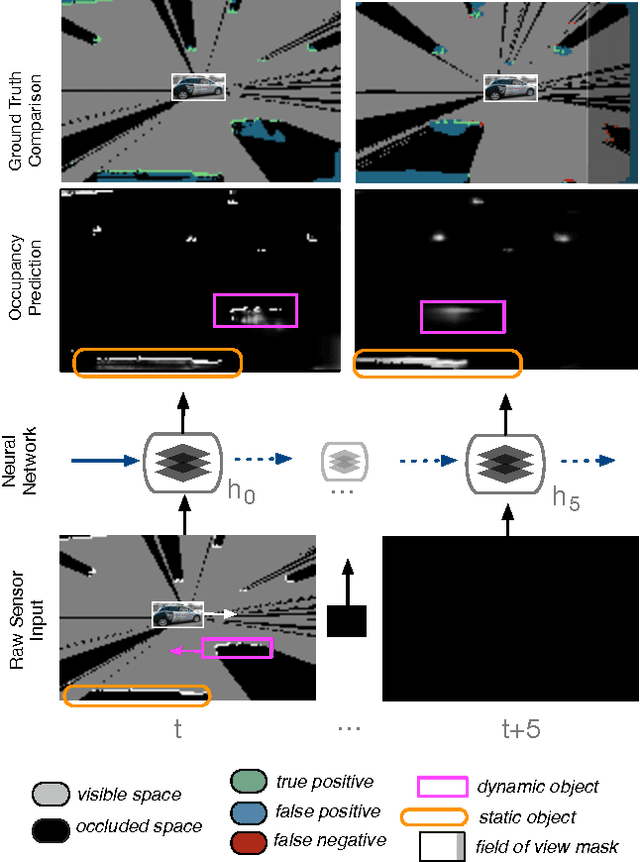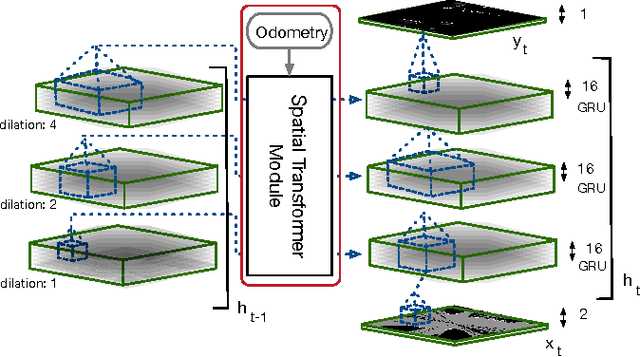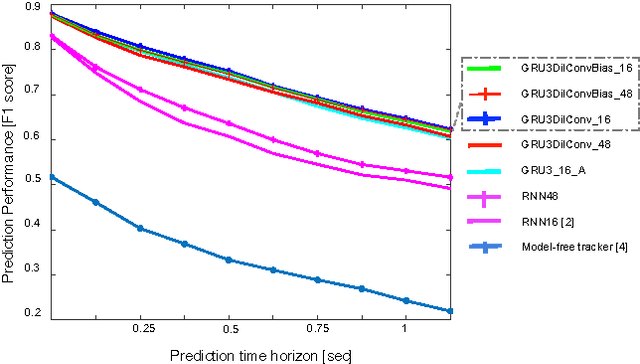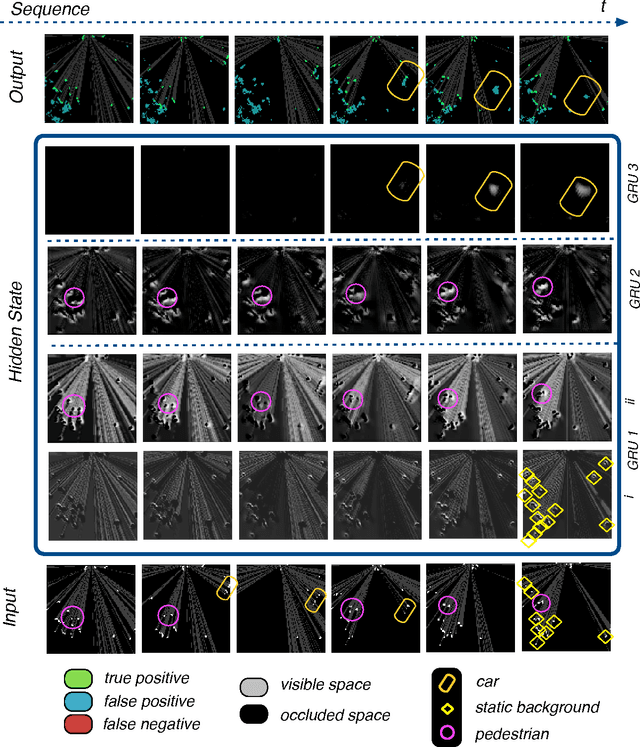Julie Dequaire
Deep Tracking on the Move: Learning to Track the World from a Moving Vehicle using Recurrent Neural Networks
Apr 19, 2017



Abstract:This paper presents an end-to-end approach for tracking static and dynamic objects for an autonomous vehicle driving through crowded urban environments. Unlike traditional approaches to tracking, this method is learned end-to-end, and is able to directly predict a full unoccluded occupancy grid map from raw laser input data. Inspired by the recently presented DeepTracking approach [Ondruska, 2016], we employ a recurrent neural network (RNN) to capture the temporal evolution of the state of the environment, and propose to use Spatial Transformer modules to exploit estimates of the egomotion of the vehicle. Our results demonstrate the ability to track a range of objects, including cars, buses, pedestrians, and cyclists through occlusion, from both moving and stationary platforms, using a single learned model. Experimental results demonstrate that the model can also predict the future states of objects from current inputs, with greater accuracy than previous work.
End-to-End Tracking and Semantic Segmentation Using Recurrent Neural Networks
Apr 19, 2016



Abstract:In this work we present a novel end-to-end framework for tracking and classifying a robot's surroundings in complex, dynamic and only partially observable real-world environments. The approach deploys a recurrent neural network to filter an input stream of raw laser measurements in order to directly infer object locations, along with their identity in both visible and occluded areas. To achieve this we first train the network using unsupervised Deep Tracking, a recently proposed theoretical framework for end-to-end space occupancy prediction. We show that by learning to track on a large amount of unsupervised data, the network creates a rich internal representation of its environment which we in turn exploit through the principle of inductive transfer of knowledge to perform the task of it's semantic classification. As a result, we show that only a small amount of labelled data suffices to steer the network towards mastering this additional task. Furthermore we propose a novel recurrent neural network architecture specifically tailored to tracking and semantic classification in real-world robotics applications. We demonstrate the tracking and classification performance of the method on real-world data collected at a busy road junction. Our evaluation shows that the proposed end-to-end framework compares favourably to a state-of-the-art, model-free tracking solution and that it outperforms a conventional one-shot training scheme for semantic classification.
 Add to Chrome
Add to Chrome Add to Firefox
Add to Firefox Add to Edge
Add to Edge